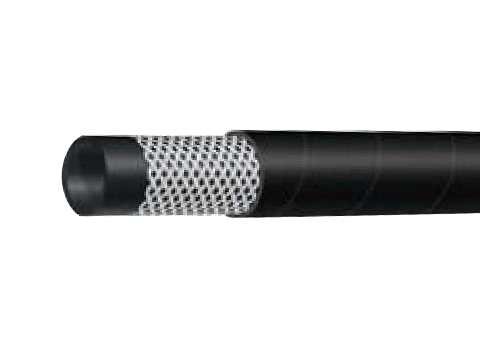Industrial Hose Steam Chemistry: Efficient Solutions and Application Prospects
2024-09-27 15:40:41
In modern industrial production processes, hoses are widely used in many fields as an important connection and transmission tool. Among them, industrial hoses are particularly important in the transportation of steam and chemicals. This article will explore in depth the application, characteristics and future development trends of industrial hoses in the fields of steam and chemicals.
Basic characteristics of industrial hoses
Industrial hoses are extremely flexible pipe systems, mainly used for fluid transmission. Compared with traditional hard pipes, hoses have higher flexibility and can easily adapt to different installation environments and complex routes. Especially in the transportation of steam and chemicals, the material, high temperature resistance, corrosion resistance and other characteristics of the hose are particularly important.
Application and requirements of steam hoses
Steam, as a high-temperature and high-pressure medium, has stringent requirements on the performance of transmission hoses. It is mainly used in industrial boilers, chemical production, food processing and cleaning equipment. Steam hoses need to have the following characteristics:
1. High temperature resistance: The temperature of steam is usually as high as 150°C or more, so the hose material must be able to withstand high temperatures without deformation or degradation.
2. High-pressure bearing capacity: Steam pressure is usually in the range of several MPa, so the hose needs to have a high pressure resistance to ensure safety.
3. Excellent fatigue resistance: Due to the complex operating environment of steam transportation, coupled with frequent switching and vibration, the hose must be wear-resistant and fatigue-resistant.
4. Safety: The potential danger of steam leakage is huge, and the hose should have good sealing performance to prevent leakage.
Material selection
For steam hoses, EPDM (ethylene propylene rubber) or silicone rubber materials are usually selected. Their high temperature resistance, excellent elasticity and chemical stability are very suitable for steam transportation. In addition, the reinforcement layer adopts a fabric or steel wire braided structure to increase the pressure resistance of the hose.
Specific requirements for chemical hoses
In the chemical industry, hoses are widely used, including in chemical production lines, laboratories, transportation and storage. In view of the variety and complex nature of chemicals, chemical hoses must meet the following requirements:
1. Chemical corrosion resistance: Different chemicals have different corrosiveness, so the hose material must be selected for different chemicals. Commonly used materials include PTFE (polytetrafluoroethylene), FEP (fluorinated ethylene propylene copolymer), etc.
2. Ability to adapt to a wide range of temperatures and pressures: Chemical reaction environments are complex and changeable, so hoses need to maintain stable performance under different temperatures and pressures.
3. Non-polluting performance: When used to transport pure chemical reagents, hoses cannot affect the purity of chemicals.
4. Long service life: The materials used for chemical hoses are usually expensive, so good durability is particularly important.
Application of different materials
For example, PTFE hoses have become the first choice for many countless chemical applications due to their excellent corrosion resistance and non-stick properties. In addition to being acid and alkali resistant, it can also withstand high temperatures and high pressures, and is one of the standing materials in the chemical industry.
Prospects and innovations of industrial hoses
With the continuous advancement of industrial production, industrial hose technology is also developing rapidly. The following are several trends worth paying attention to in the future:
1. Smart hose technology: Combining Internet of Things technology, the development of smart hoses with sensors will greatly enhance monitoring and early warning capabilities and avoid unexpected accidents.
2. Development of new materials: The application of new materials will promote new breakthroughs in hoses in terms of high temperature resistance, corrosion resistance and flexibility.
3. Environmental protection and safety: In the future, hose production will pay more attention to the use of environmentally friendly materials, while further strengthening safety performance to meet increasingly stringent environmental regulations and standards.
4. Personalized solutions: According to the special needs of customers in different industries, customized hose systems are designed to improve adaptability and efficiency.
5. Cost efficiency: With the improvement of technology and the optimization of production processes, the cost of hoses will gradually decrease, increasing the competitiveness of enterprises.
The role of industrial hoses in steam and chemical transportation is irreplaceable. The required material properties, safety performance and adaptability determine its wide application value. With the development and innovation of technology, industrial hoses will play a more important role in future industrial production, bringing higher safety and efficiency to industrial processes.